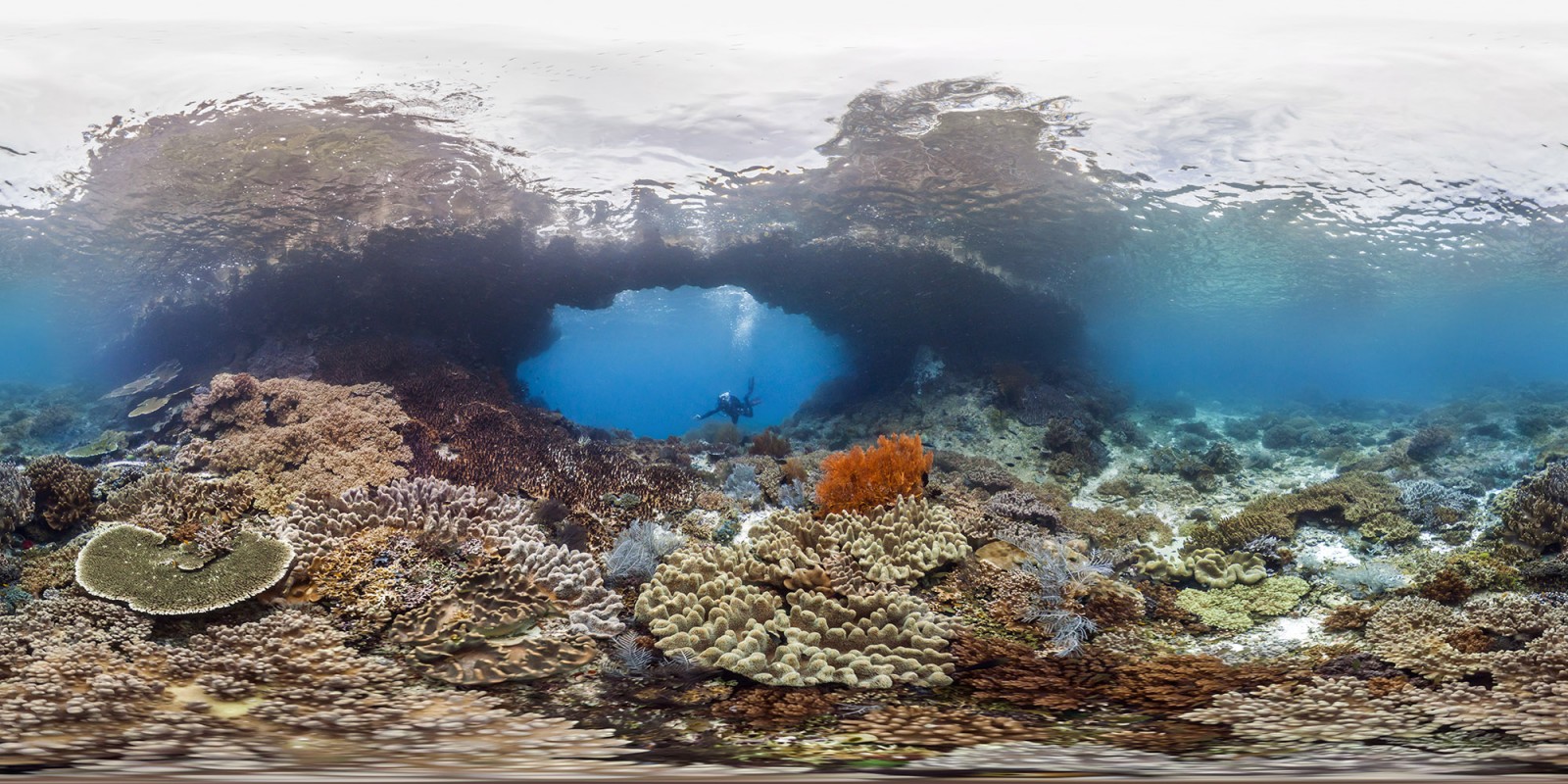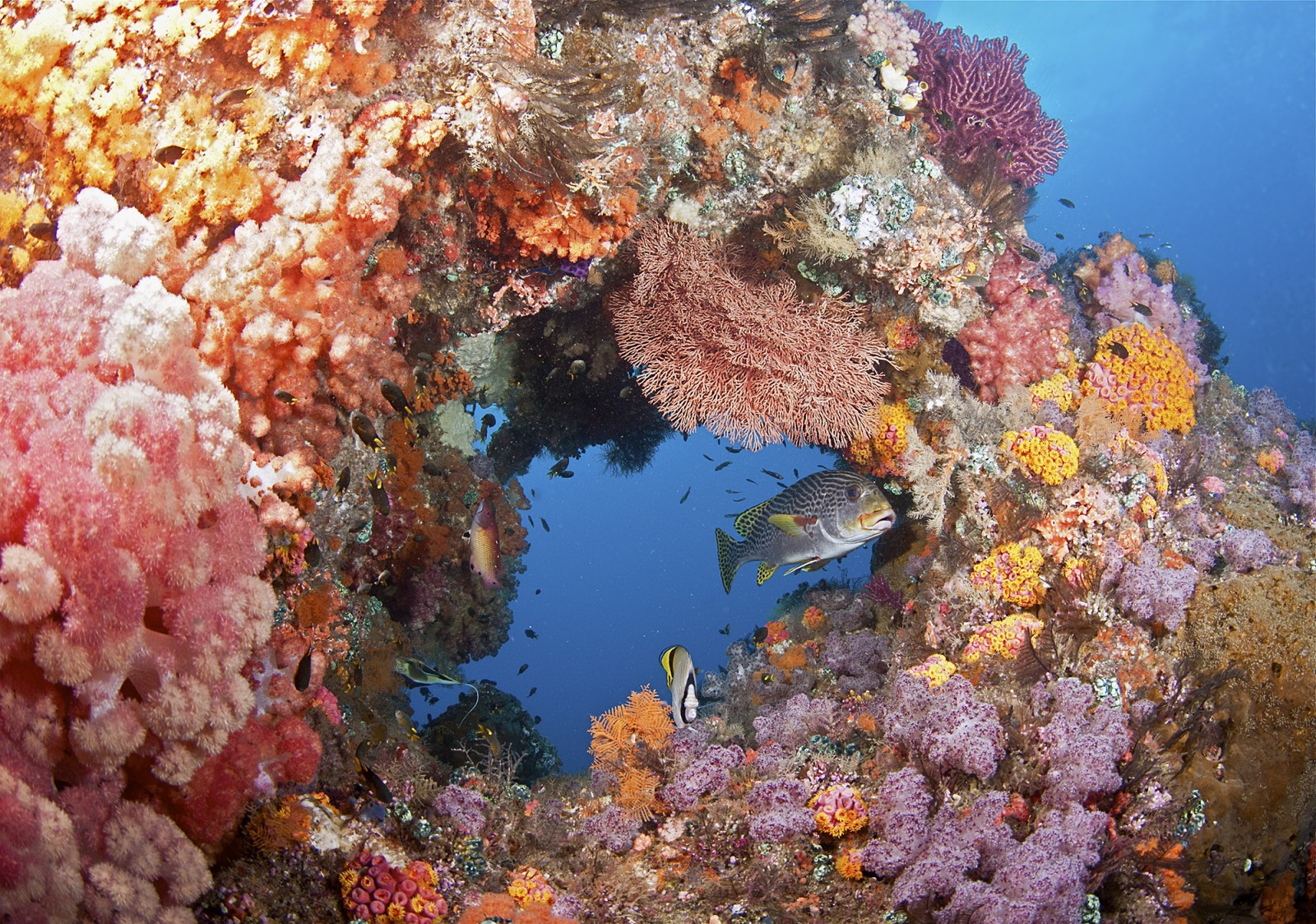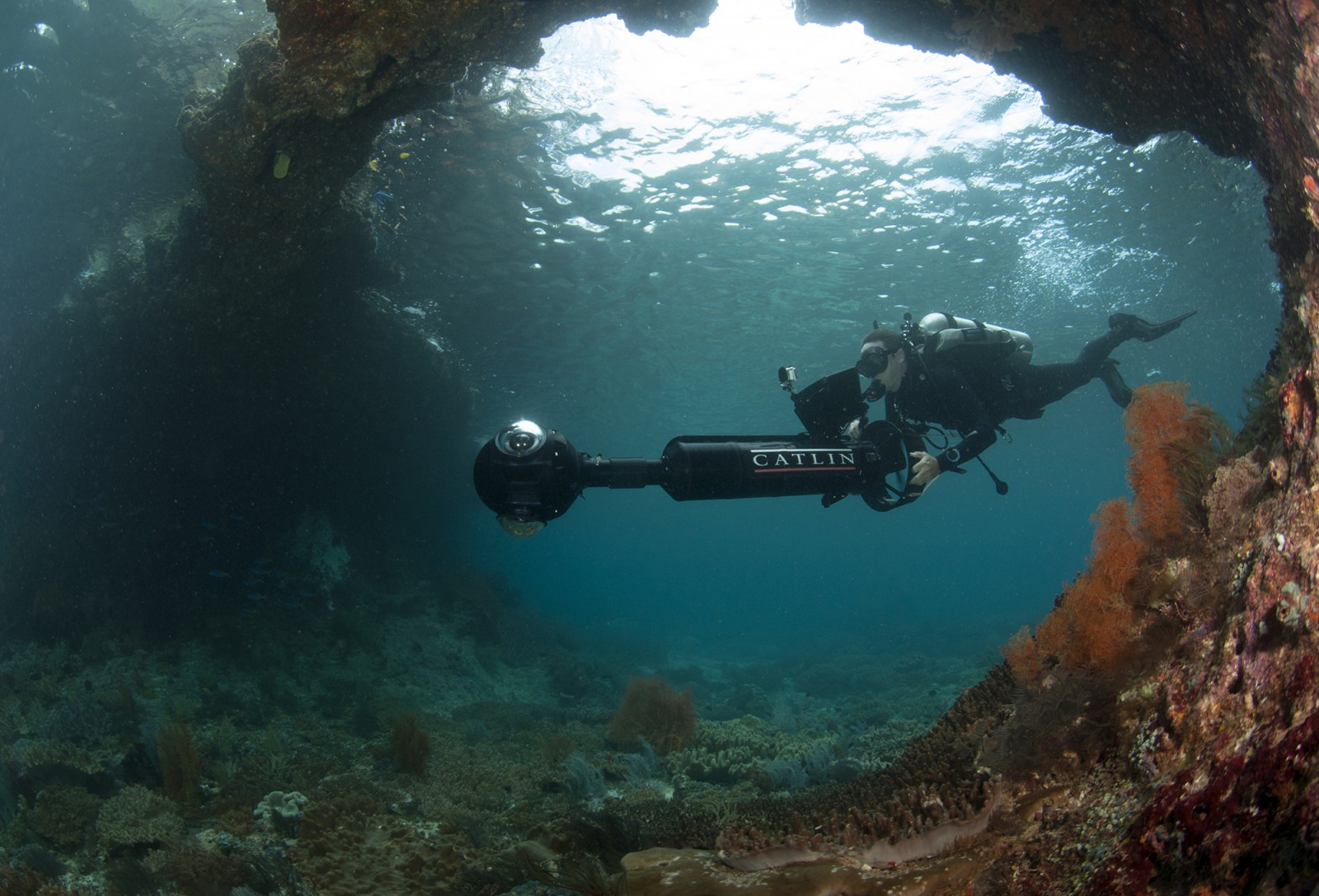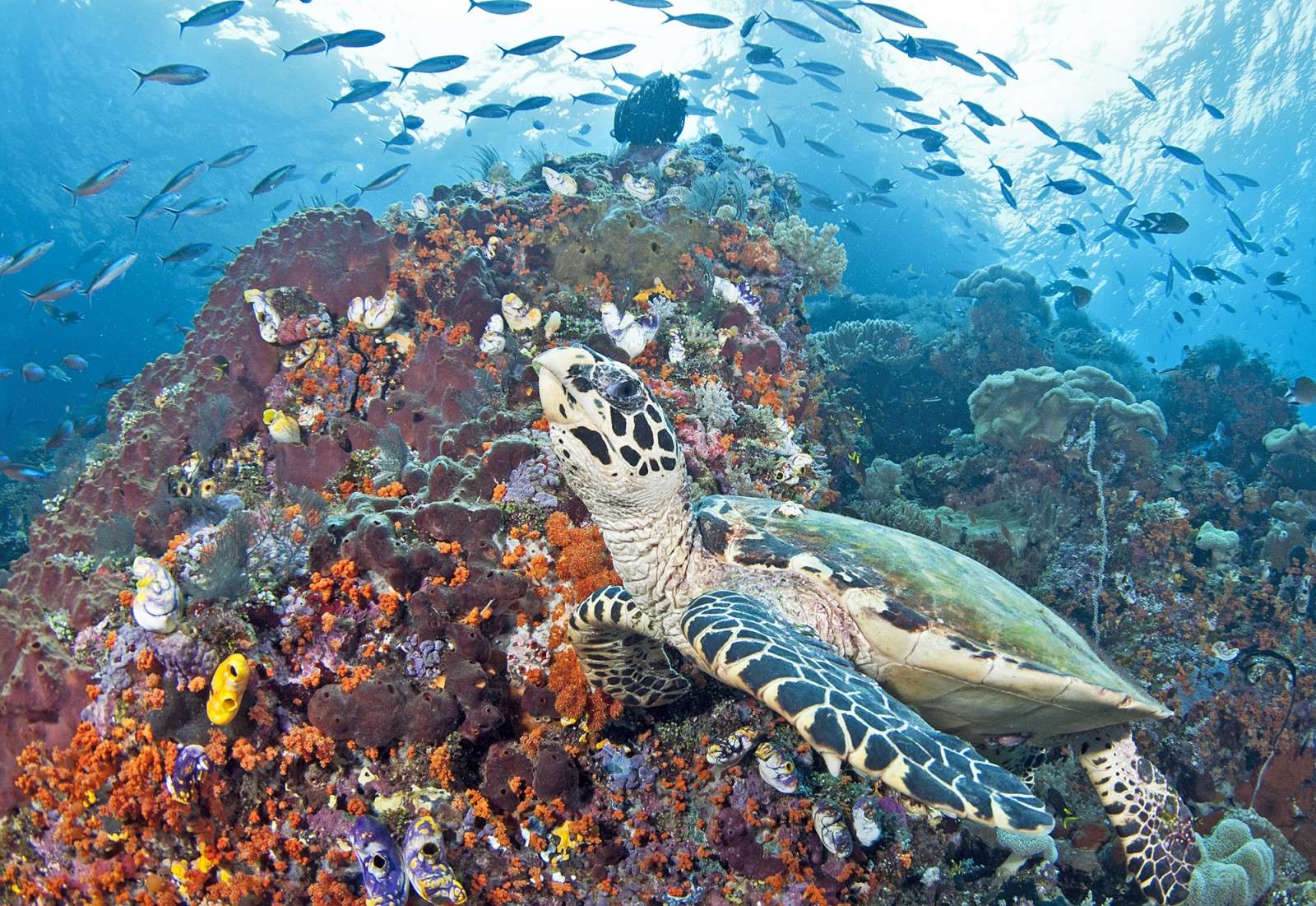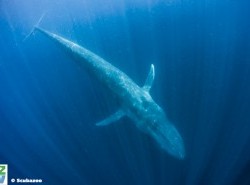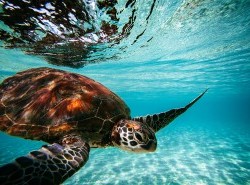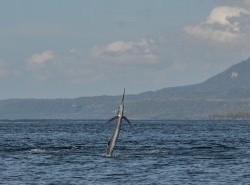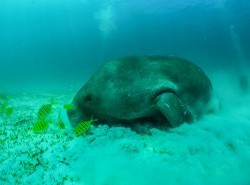If humans are driving earth’s sixth great extinction event, coral reefs will be one of the first and most visible ecosystems to succumb. Scientists estimate that by 2050, the ocean could be largely devoid of reefs as climate change and our relentless plundering of the sea set in motion geological changes not seen for millions of years. But according to the Catlin Seaview Survey, a multi-year project to map the world’s coral reefs, there may be evidence that certain reefs in the Coral Triangle could resist longer than others.
Catlin Seaview Survey is using cutting edge camera technology and a big-data approach to establish baselines for key indicators like health, diversity, decline and resilience. Survey sponsor Catlin is an international insurance company that suggests insurers should take a lead role in improving understanding of the potential for changes to the environment. Their first project was a large-scale survey of the Arctic. Research outcomes are distributed to the world’s scientific community as well as serving the company’s corporate clients. It is essentially risk management on a grand scale.
Coral reefs represent just 1% of our oceans but support 25% of the species that live in them. This makes South East Asia’s Coral Triangle bioregion the global epicentre of marine biodiversity on the planet, with 75% of all known coral building species, 6 out of 7 of the world’s turtle species and more than 3000 species of fish. 120 million people depend on these reefs for their livelihoods – if they disappeared, the attendant loss of food security would drive economic migration on a massive scale.
Over the last few months, Catlin Seaview Survey scientists have been assessing reefs in hotspots throughout the Coral Triangle, which encompasses the territorial waters of Indonesia, the Philippines, Malaysia, Papua New Guinea, the Solomon Islands and Timor Leste. They believe the bioregion could become one of the last refuges on earth for coral reefs.
Coral reefs represent just 1% of our oceans but support 25% of the species that live in them. This makes South East Asia’s Coral Triangle bioregion the global epicentre of marine biodiversity on the planet, with 75% of all known coral building species, 6 out of 7 of the world’s turtle species and more than 3000 species of fish. 120 million people depend on these reefs for their livelihoods – if they disappeared, the attendant loss of food security would drive economic migration on a massive scale.
Over the last few months, Catlin Seaview Survey scientists have been assessing reefs in hotspots throughout the Coral Triangle, which encompasses the territorial waters of Indonesia, the Philippines, Malaysia, Papua New Guinea, the Solomon Islands and Timor Leste. They believe the bioregion could become one of the last refuges on earth for coral reefs.
According to Catlin Seaview Survey’s Chief Scientist Professor Ove Hoegh-Guldberg, reliable data is a vital first step towards mitigating human impacts. “Understanding the structure and function of such reefs is of the utmost importance if we are to underpin their resilience to global change,” he says. “If we don’t measure these corals, we can’t manage the impact of ocean changes.”
Traditionally, marine biologists conduct transects using simple tape measures to survey reefs. But Catlin Seaview Survey’s SVII camera rig travels at 4km an hour, taking a 360-degree image every three seconds. The photos are then stitched together and published online. “Surveying that would have taken months using standard methods can now be completed in days,” says Catlin Seaview Survey Director Richard Vevers.
The team recently completed a three-week survey in the waters off Manado in Sulawesi, Indonesia - the geographic centre of the Coral Triangle, sitting directly on the equator. The coral reefs here have developed over millions of years, creating a unique repository of coral abundance and biodiversity. This combination could make them more resistant to coral bleaching caused by rising ocean temperatures.
These reefs and others like them sit at the interface between the Pacific and Indian Oceans, where a coalescence of warm and cold currents causes the upwelling of nutrients partly responsible for making the region so fertile. Some corals may have adapted to shifting sea temperatures and repeated bleaching episodes, making them less susceptible.
In the face of increasingly radical shifts in environmental conditions, they could hold the key to future marine management strategies.
Traditionally, marine biologists conduct transects using simple tape measures to survey reefs. But Catlin Seaview Survey’s SVII camera rig travels at 4km an hour, taking a 360-degree image every three seconds. The photos are then stitched together and published online. “Surveying that would have taken months using standard methods can now be completed in days,” says Catlin Seaview Survey Director Richard Vevers.
The team recently completed a three-week survey in the waters off Manado in Sulawesi, Indonesia - the geographic centre of the Coral Triangle, sitting directly on the equator. The coral reefs here have developed over millions of years, creating a unique repository of coral abundance and biodiversity. This combination could make them more resistant to coral bleaching caused by rising ocean temperatures.
These reefs and others like them sit at the interface between the Pacific and Indian Oceans, where a coalescence of warm and cold currents causes the upwelling of nutrients partly responsible for making the region so fertile. Some corals may have adapted to shifting sea temperatures and repeated bleaching episodes, making them less susceptible.
In the face of increasingly radical shifts in environmental conditions, they could hold the key to future marine management strategies.
